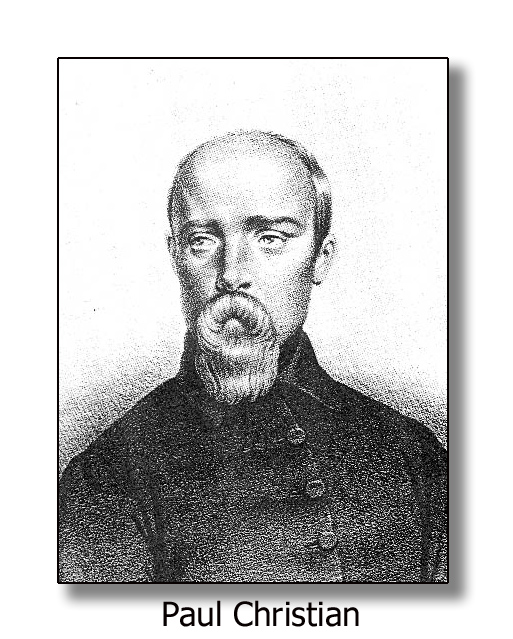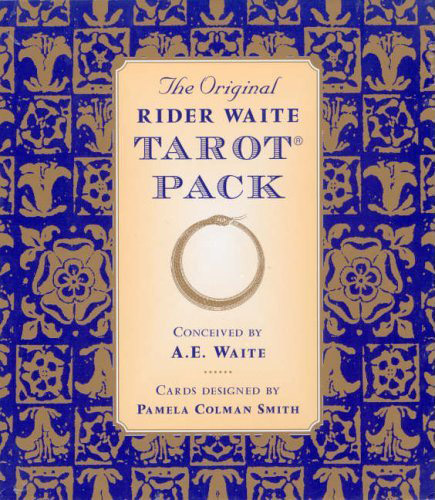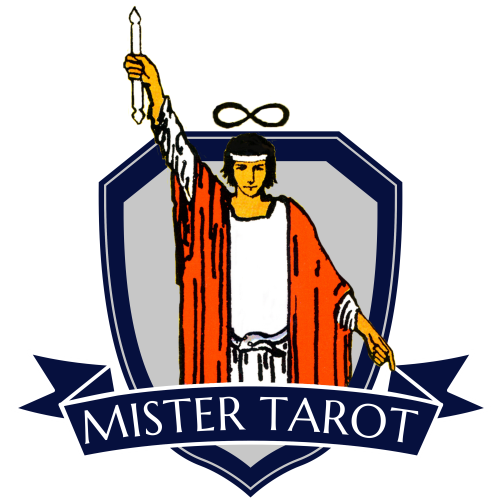Not many people realise that the term ‘Major Arcana’ is relatively new. Most think Tarot always had a Major and Minor Arcana, and that the images have been the same for eternity — but this is not the case.
Prior to 1860 the two sections of the Tarot were simply known as the trumps and the pip cards. The trumps were 22 picture cards showing characters and scenes from the Renaissance. Some of these images had similar names to those of modern Tarot, for example, The Emperor, Justice, and Death. Other cards were given terms such as The Pope, Hunchback, and Traitor.
Many of Tarot’s images and names have changed over time. The pip cards were very similar to the ordinary playing cards of today. Pip cards were the four suits of numbered cards with illustrations of coins, cups, swords, and sticks — all shown against decorative backgrounds.
 Paul Christian (whose real name was Jean-Baptiste Pitois) was the man who gave the two sections of the Tarot their esoteric names Major & Minor Arcana. The word ‘arcana’ means mysterious, or secret, and by bestowing these Latin titles upon the cards, Christian attempted to generate a magical, mystical atmosphere around the Tarot.
Paul Christian (whose real name was Jean-Baptiste Pitois) was the man who gave the two sections of the Tarot their esoteric names Major & Minor Arcana. The word ‘arcana’ means mysterious, or secret, and by bestowing these Latin titles upon the cards, Christian attempted to generate a magical, mystical atmosphere around the Tarot.
Christian was a prolific author of many books on Tarot. Unfortunately he used fake quotations and fictitious historical narrative in his works — so we have to take this into consideration when reading any of his writings about the cards.
The Major Arcana of the modern Tarot is numbered from 0 to 21 and they are the cards receiving the most attention. They’re regarded as the most powerful images, showing the psychological influences and spiritual principles making an impact on your life. In a Tarot reading they show the underlying reasons behind events and they can reveal the mind-set behind certain behaviour.
When a high percentage of Major Arcana cards turn up in a Tarot reading, it can indicate a time of change and/or an opportunity for personal growth. This usually comes about as a result of having to deal with dramatic circumstances, or because a shift in consciousness has led to some mind-bending personal insights and greater self awareness.
In today’s Tarot, the sequence of the Major Arcana begins with The Fool and ends with The World. Some people see this series of cards as the journey through life, or representation of progressive steps in spiritual evolution. These cards are filled with archetypal, magical, and biblical symbols. Lots of occult symbols were added to the images as they evolved. Different artists have included themes and symbolism into the design to fulfil their notion of what the card should represent. One of these artistic renderings has proven to be more popular than any other — that’s the Rider-Waite Tarot.
 More than 6 million Rider-Waite Tarot decks have been sold. Its Major Arcana design has become the basis of most modern Tarot spin-off packs — and it’s easy to see why — the images are simple, yet so full of meaning. And when you look beyond the outlines of the main characters, you’ll often find important symbols amongst the scenery. For example, consider how many times water is used in the background of the Major Arcana cards.
More than 6 million Rider-Waite Tarot decks have been sold. Its Major Arcana design has become the basis of most modern Tarot spin-off packs — and it’s easy to see why — the images are simple, yet so full of meaning. And when you look beyond the outlines of the main characters, you’ll often find important symbols amongst the scenery. For example, consider how many times water is used in the background of the Major Arcana cards.
About half of the cards show ponds, lakes, or flowing rivers. Water represents the subconscious, the psyche, intuition, and the emotions. All of these qualities help us to connect (in some way) to the messages received during a Tarot reading. So it’s not surprising this subtle, yet powerful symbol finds its way into so many of the Major Arcana cards.
